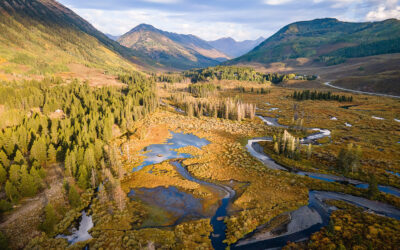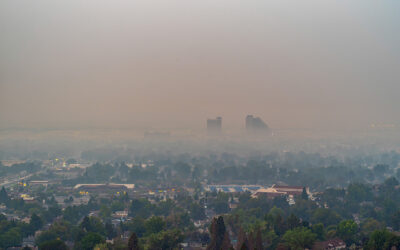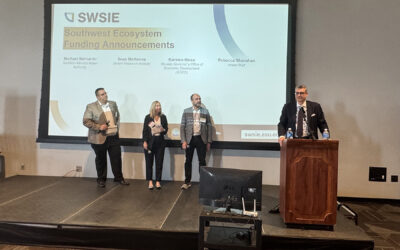Heavy ash-laden smoke billowed into the Lake Tahoe basin during the Caldor Fire, prompting citizen scientists to document the ash for a research project at the University of Nevada, Reno and the Desert Research Institute that is developing fire tornado prediction tools for public safety during extreme wildfires.
Researchers at University of Nevada, Reno and DRI launch new citizen science project to gather ashfall data
By: Mike Wolterbeek, University of Nevada Reno
Reposted from University of Nevada, Reno – https://www.unr.edu/nevada-today/news/2021/fire-tornados-and-ashfall
RENO, Nev. – With massive wildfires plaguing the western United States, scientists have been tracking an increase in dangerous wildfire-generated extremes, including fire-generated thunderstorms and tornados embedded in wildfire plumes that can reach up to a mile high. University of Nevada, Reno and DRI researchers are building the predictive and diagnostic tools that will transform the understanding of fire-generated extreme weather and pave the way for future life-saving warnings to firefighters and the general public.
Extreme wildfires have emerged as a leading societal threat, causing mass casualties and destroying thousands of homes – and despite these impacts, fire-hazards are less understood and harder to predict than other weather related disasters. One of the least understood of these wildfire hazards are the severe fire-generated thunderstorms.
“There have been decades of success in using radar and satellite observations to issue life-saving warnings for severe weather; for fire-generated tornadic vortices and explosive storm clouds these same tools show remarkable, yet incompletely realized, potential,” Neil Lareau, atmospheric scientist from the University of Nevada, Reno’s Physics Department and lead for the research, said. “To fully realize this potential, new physical and conceptual models are needed for interpreting radar and satellite observations of the wildfire environment.”
These conceptual models will facilitate life-saving warnings and enhance decision support for wildfire stakeholders, thereby providing an immediate societal benefit.
Lareau and his colleague Meghan Collins of DRI will identify common factors contributing to the fire-generated tornados using satellite and weather radar and combine it with crowd-sourced ashfall data, through the launch of a new citizen science project called Ashfall Citizen Science. These crowd-sourced data will help improve the understanding of wildfire plumes by better documenting the size and shape of fire ash lofted into the sky.
“What we’re looking for are pictures of ash that falls throughout our region from citizen scientists,” Lareau said. “We’ll build conceptual and physical models to facilitate life-saving warnings and enhance decision support for wildfire stakeholders using the citizen science data in conjunction with our radar observations of fire-generated tornadic vortices and wildfire plumes to interpret the wildfire environment.”
The project will engage the public in wildfire science in two ways: it will develop middle-school in-class lessons focused on fire-generated weather, and it will employ a citizen science campaign with a new web app to collect photographs of the ash and debris that “rain” down from wildfire plumes.
The citizen science campaign is expected to reach thousands of users every year, and the in-classroom program upwards of 500 students per year.
“Our team will be sharing the science behind wildland fire with middle school classrooms across the region as part of this project,” Collins said.
So far, since starting the impromptu project in 2020, nearly 20,000 people have engaged the project, with about 100 photographs submitted from a wide ranging area of the western US.
“We’re looking for participation anywhere in the western states, from Idaho to Arizona,” Lareau said. “Community science, also known as citizen science, is important to this project. Gathering this kind of data over time and in many places would be prohibitive otherwise.”
This citizen science capability is well-suited for wildfires, which are hard to predict in their timing and location, and may thereby enhance the team’s ability to quantify fire-generated weather phenomena and their impacts. Citizen science has been used in other analogous applications, including to obtain observations of ashfall from volcanoes.
“You can help track wildfire ash and help scientists demystify fire weather,” Collins said. “Your photos of the size and shape of ash particles that fall around wildfires will play an important role in wildland fire research. Users submit time- and geo-tagged photographs of the ash with objects for scale in the photo.”
With this project funded by the National Science Foundation, the #Ashfallscience Twitter campaign will continue, and be amplified, during high impact wildfires. This approach is expected to reach thousands of users, increasing the likelihood of sufficient data collection. The next steps with these crowd-sourced data are to harvest images from Twitter and apply image processing tools to extract ash shapes and sizes, to aggregate data to form size and shape distributions, and mine NEXRAD radar data corresponding to the time and location of the #Ashfallscience images.
To participate and be a part of this community, use the Citizen Science Tahoe web app. In your phone’s browser (where you would Google something), type in: citizensciencetahoe.app, then click on Sign Up to create a username; or click Continue as Guest. Find the #Ashfall Citizen Science survey and share photos and observations of ashfall and smoke when you see them.
The radar and satellite capabilities described above and the expansion of citizen science observations provide the tools needed to transform the understanding of wildfire convective plumes and their link to fire-generated tornadic vortices. #Ashfallscience is a twitter- and web app-based citizen science data project which will increase the scientists’ ability to quantitively link radar observations with fire processes.
The size and shape distributions of ash in wildfire plumes is poorly characterized and difficult to measure “This combination of researcher- and volunteer-driven data collection will allow us to begin to build both empirical and theoretical relationships between ash properties and radar reflectivity,” Lareau said. “This is the key to building models for prediction of these otherwise mostly unpredictable extreme and dangerous fire behaviors.”
###
The University of Nevada, Reno, is a public research university that is committed to the promise of a future powered by knowledge. Nevada’s land-grant university founded in 1874, the University serves 21,000 students. The University is a comprehensive, doctoral university, classified as an R1 institution with very high research activity by the Carnegie Classification of Institutions of Higher Education. Additionally, it has attained the prestigious “Carnegie Engaged” classification, reflecting its student and institutional impact on civic engagement and service, fostered by extensive community and statewide collaborations. More than $800 million in advanced labs, residence halls and facilities has been invested on campus since 2009. It is home to the University of Nevada, Reno School of Medicine and Wolf Pack Athletics, maintains a statewide outreach mission and presence through programs such as the University of Nevada, Reno Extension, Nevada Bureau of Mines and Geology, Small Business Development Center, Nevada Seismological Laboratory, and is part of the Nevada System of Higher Education. Through a commitment to world-improving research, student success and outreach benefiting the communities and businesses of Nevada, the University has impact across the state and around the world. For more information, visit www.unr.edu
The Desert Research Institute (DRI) is a recognized world leader in basic and applied environmental research. Committed to scientific excellence and integrity, DRI faculty, students who work alongside them, and staff have developed scientific knowledge and innovative technologies in research projects around the globe. Since 1959, DRI’s research has advanced scientific knowledge on topics ranging from humans’ impact on the environment to the environment’s impact on humans. DRI’s impactful science and inspiring solutions support Nevada’s diverse economy, provide science-based educational opportunities, and inform policymakers, business leaders, and community members. With campuses in Las Vegas and Reno, DRI serves as the non-profit research arm of the Nevada System of Higher Education. For more information, please visit www.dri.edu.


